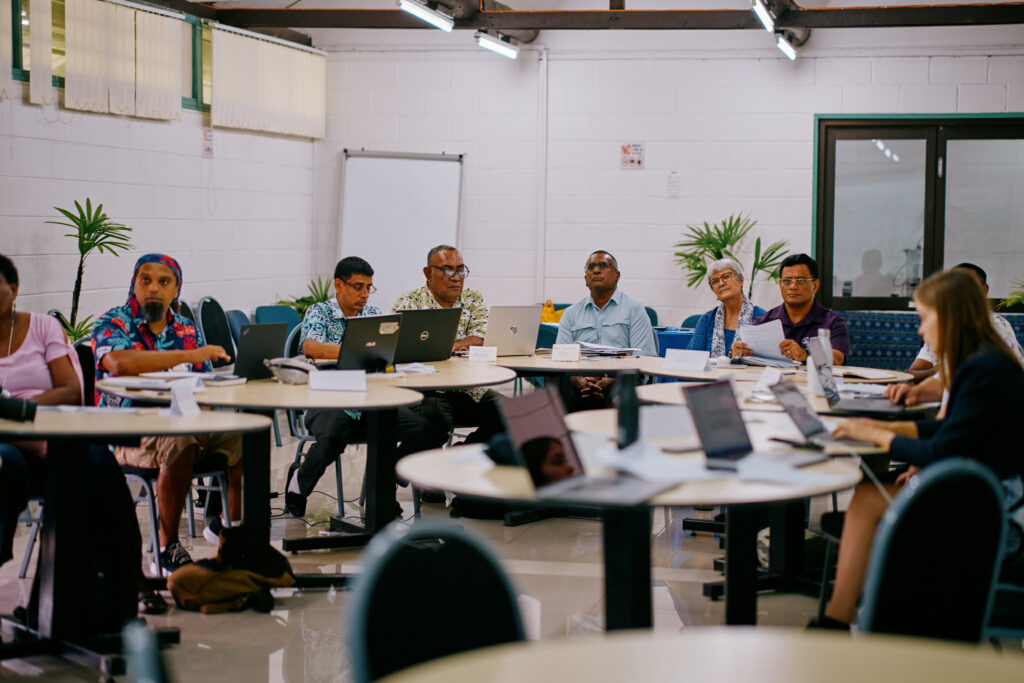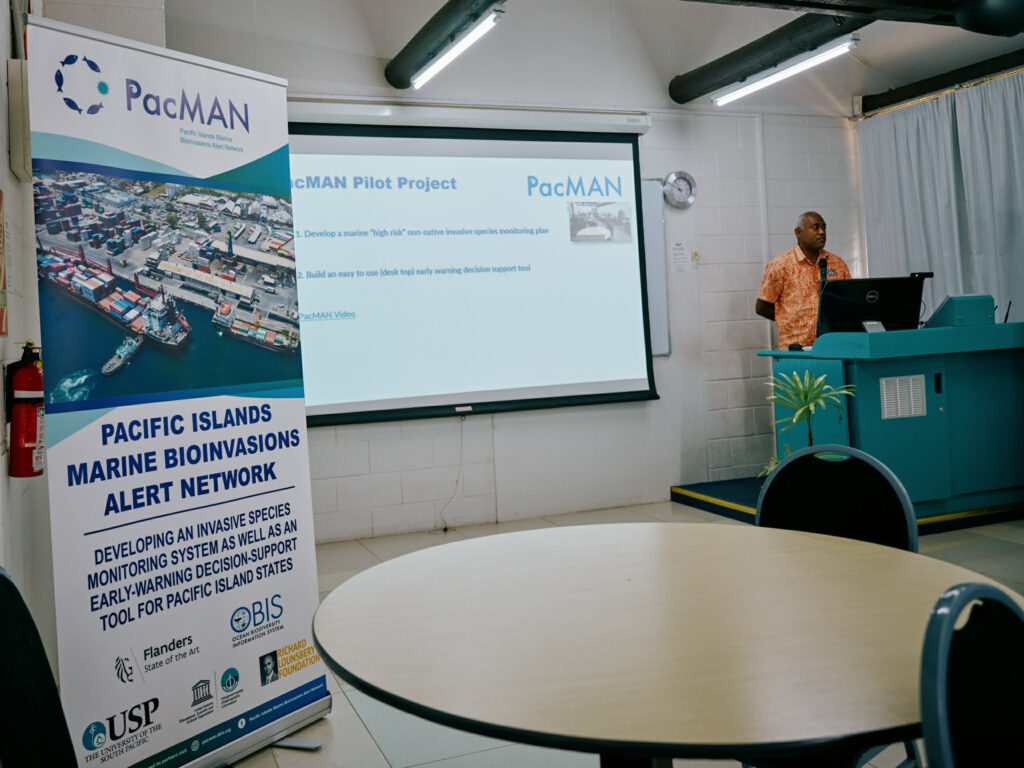The PacMAN local advisory board meeting was held at USP campus on the 10 November 2022 in Suva, Fiji. The report of the meeting is now available. The meeting brought together 18 representatives of 8 different local stakeholder institutions working in the marine field of Fiji. The purpose of the meeting was to discuss the progress of the PacMAN project and the development of the PacMAN decision support tool to meet the needs of all local stakeholders in monitoring marine invasive species. The meeting was opened by Dr Isoa Korovulavula, the director of the Institute for Applied Sciences (IAS) at the University of the South Pacific (USP) in Suva. Ms. Sandeep Singh, the director of the Department of the Environment at the Ministry of Environment and Waterways in Fiji, provided her welcome words and chaired the meeting. The importance of PacMAN as bringing the issue of marine invasive species to the forefront of discussion in Fiji was stated, as well as the need for more data and more regional collaboration in the field of marine invasive species. During the last two years, the PacMAN project team has had to meet virtually as the COVID pandemic stopped all international travel. Despite this, the project has advanced well,
and is ready to move on the final steps of developing the operational monitoring and the decision support tool. The main objectives of the meeting were to gain insights in the local stakeholder requirements and operations.
The project progress was presented by Mr Joape Ginigini of IAS, the local project manager of PacMAN. In the first two years, the project has been able to develop a monitoring plan and collect field samples from the port of Suva. A total of 112 specimens have already been sorted from these collections, without an indication of the presence of any of the species on the invasive species watchlist. The project has been active in linking the results to stakeholder needs through different outreach activities. Interest on the project has been received from different regional partners active in the South Pacific. The local stakeholders indicated the importance of keeping the watchlist flexible, and considering allowing the monitoring and
addition of also pathogenic species in the future. In a next phase, the PacMAN project could also include monitoring for harmful algae and toxins. It was iterated that the current objective of the project is to monitor new introductions to the area, not any possible existing marine invasive
species. The local stakeholders agreed on the revised monitoring plan, as recommended by the international scientific advisory board, and appreciated their input.
Mr Pieter Provoost (UNESCO/IOC/PacMAN data manager) introduced the elements of a decision support system and led the conversation on the stakeholder needs for this tool. The PacMAN decision support tool will provide risk evaluations for invasive species based on the likelihood of introduction, establishment, and local spread. A variety of data and information sources will feed into this process, including data on transport pressure, physiological traits and environmental tolerances, life cycle characteristics, and ecological factors as well as a species invasive history. Other existing decision support tools were briefly introduced, and several
questions were provided to guide the discussion on stakeholder needs with regards to the development of the decision support tool. The need for the decision support tool was agreed by all stakeholders. They recommended that a verification step of positive detections is necessary and should be done by experts, if possible locally, and a plan will need to be made for how the information will flow from the scientists to the appropriate mandated institutions. An alert system analogous to a tsunami warning system was suggested as this is working well in Fiji and the region. There was strong support that the decision support system should also track management actions, and emergency response plans should be made as soon as possible, as this is already available for terrestrial and aquatic (freshwater) invasive species, but not yet for marine species.
The next and final year of PacMAN will be crucial, in both the technical sampling as well as close engagement with the stakeholders. PacMAN will work closely with the national invasive alien species working group. PacMAN has the potential to become an important information resource to assist the region in dealing with invasive species and can complement regional work on biosecurity at SPC. The meeting was closed by Ms Sandeep Singh who thanked all meeting participants.















0 Comments